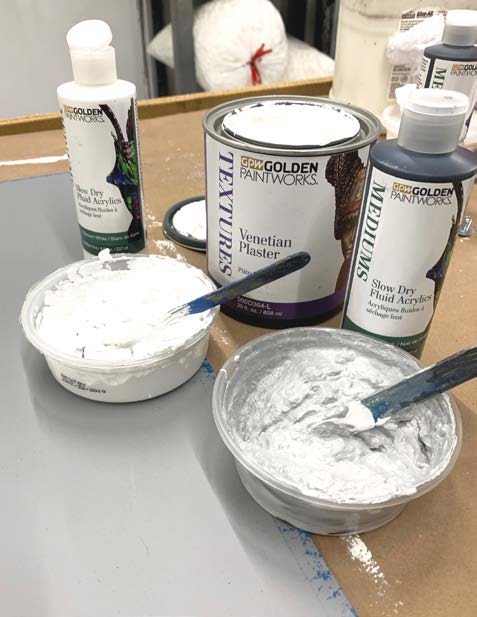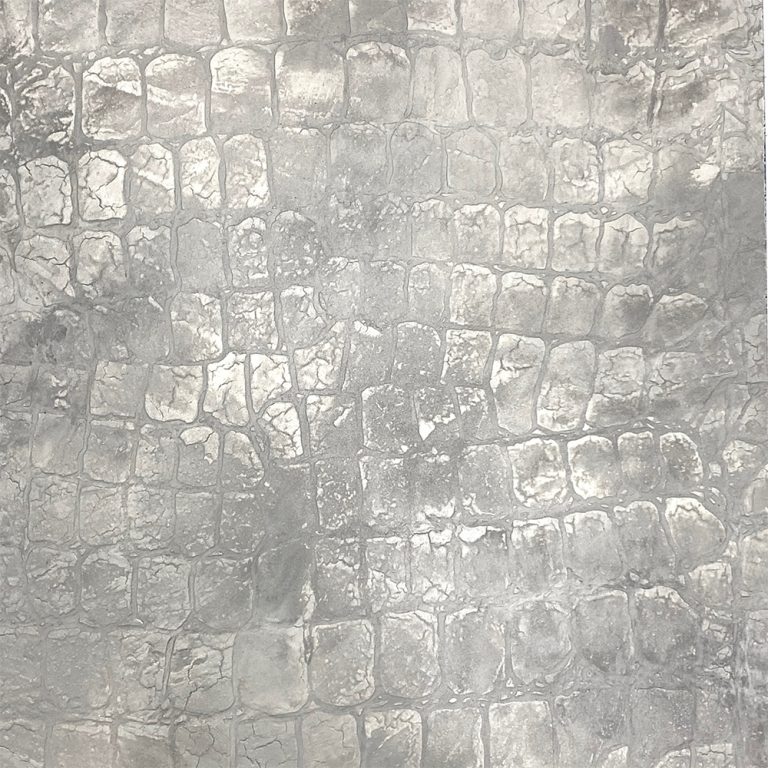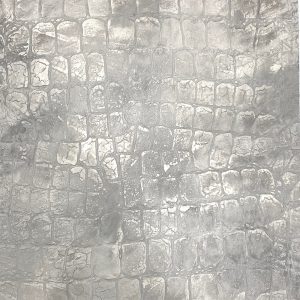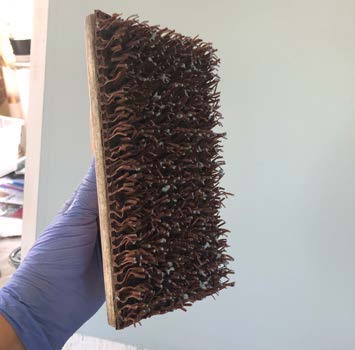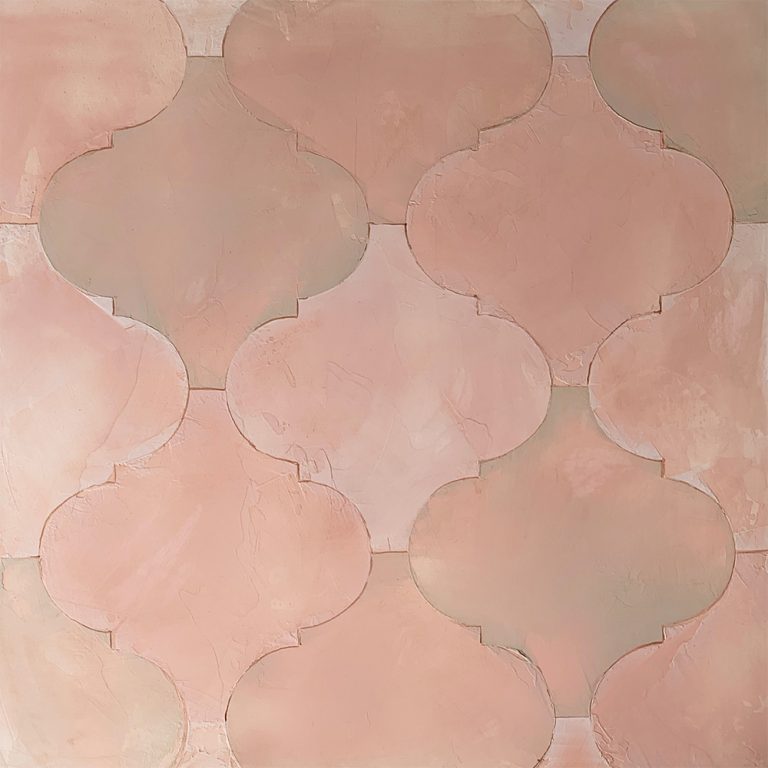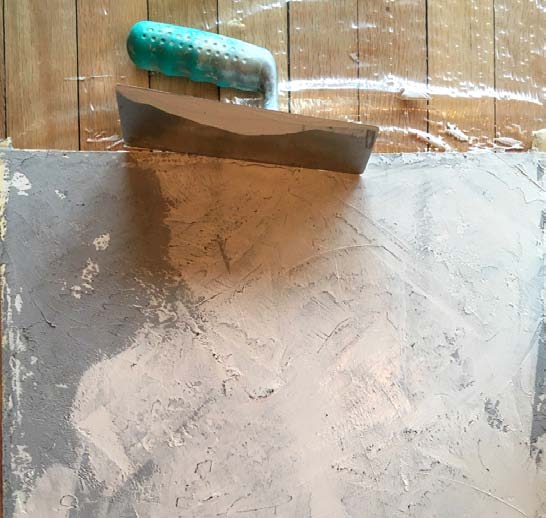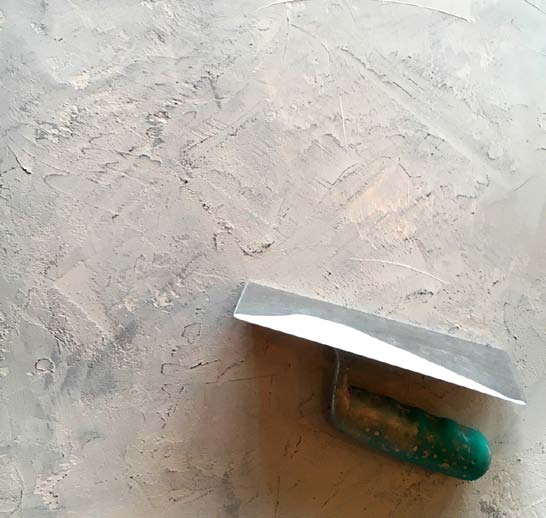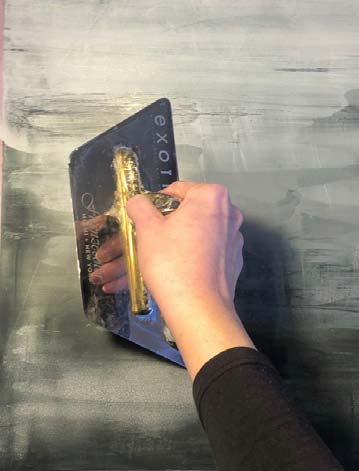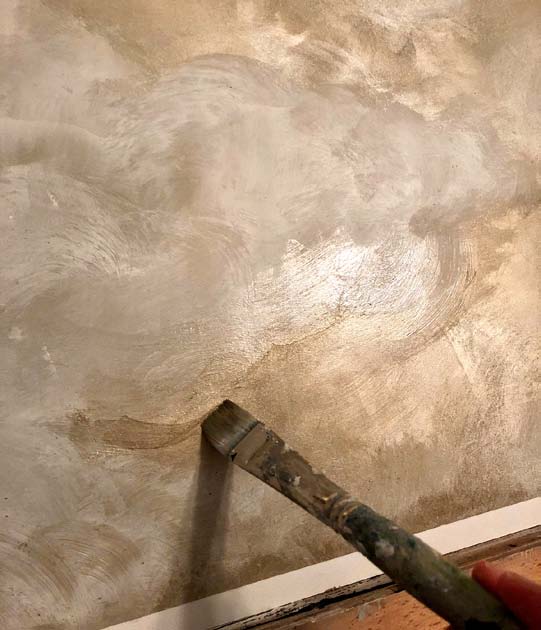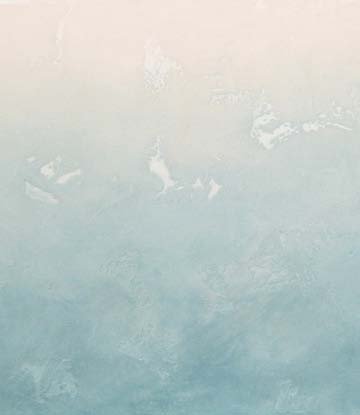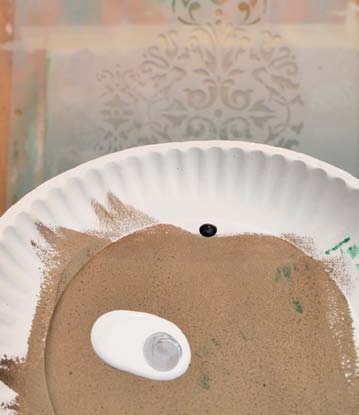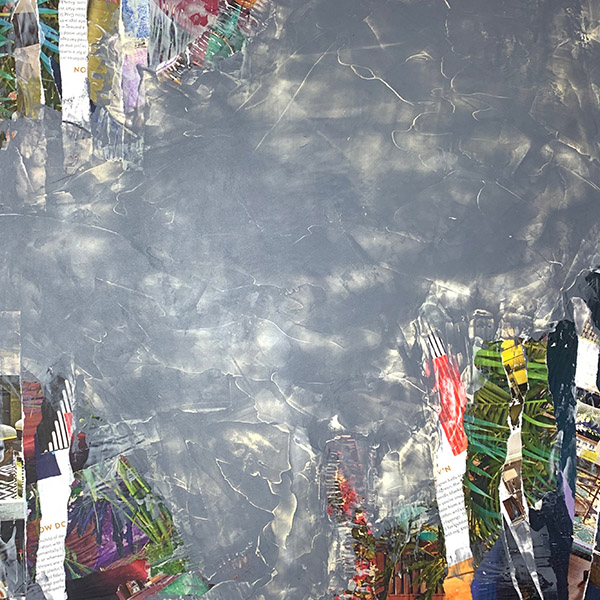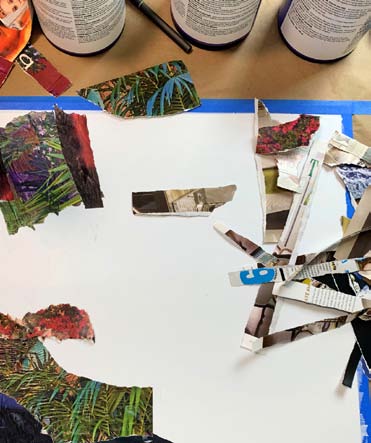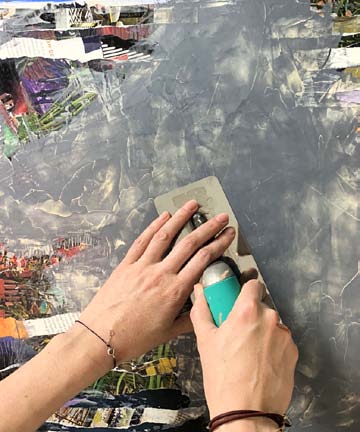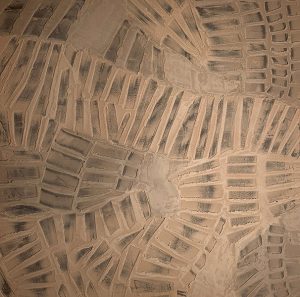
DECORATIVE FINISH HOW-TO
Croc
Artist: Tobey Renee Sanders
Share this article
PROJECT SUPPLIES:
- Benjamin Moore 1599 Marina Gray
- Golden Paintworks Slow Dry Fluid Acrylics: Titanium White and Carbon Black
- Golden Paintworks Venetian Plaster
- Golden Paintworks Soapstone
- Golden Paintworks Metallic Texture: Tint Base Pearl
- 3M Stencil Adhesive Spray
- Designer Stencils Large Crocodile Skin Wall Stencil
- Paint Roller
- Mixing Cups and Stirrers
- Steel Plaster Trowel
INSTRUCTIONS:
1 | Roll on basecoat color, 1599 Marina Gray by Benjamin Moore. Let dry.
(Photo 1)
2 | Create Venetian Plaster mixes for the croc texture:
- First Mix: Venetian Plaster mixed with Titanium White Slow Dry Fluid Acrylic, and
- Second Mix: Venetian Plaster mixed with Carbon Black Slow Dry Fluid Acrylic.
(Photo 2)
3 | Spray Crocodile pattern stencil with stencil adhesive on back. Let dry for 20 minutes.
4 | Place stencil on surface. Double load plaster trowel with both Venetian Plaster mixes. Trowel both colors overs the crocodile pattern stencil and blend colors together. Remove stencil carefully and let the surface dry.
(Photo 3)
5 | Prepare toning layers for Croc finish:
- First Mix: Soapstone mixed with Carbon Black Slow Dry Fluid Acrylic, and
- Second Mix: Metallic Texture Pearl Tint Base with Titanium White Slow Dry Fluid Acrylic.
(Photo 4)
6 | Load trowel with both toning colors and trowel on a skim coat over the croc texture. Blend colors softly until you are happy with the balance. Let dry.
(Photo 5)
Featured Products
About the Artist
Tobey Renee Sanders is an accomplished Decorative Artist, Design expert and Tv personality born and raised in Atlanta, GA. Tobey Renee has more than 20 years of experience in Interior Design & Decorative Arts and is widely recognized for her custom faux finish techniques and stunning line of contemporary art. In 2003, She launched FauxDécor Design Studio, a super talented decorative painting company, providing residential spaces, commercial property and celebrity clients with uniquely designed and custom faux finishes. Tobey Renee specializes in rich high-end Plasters, such as Glassello and Marmorino. She is mostly known for her popular GlamRock Mica Finishes and Diamond Glass technique, that adorns the walls of Hollywood’s hottest A list celebrity homes. Her client list includes design firms and developers in Atlanta, Los Angeles, New York and Washington, DC, as well as entertainers and athletes across the nation. She has also been featured on HGTV’s Smart Home, Bravo’s “The Real Housewives of Atlanta” and Vh1’s K Michelle’s: My Life. Her faux finished rooms have been showcased in numerous publications such as, People Magazine, Black Enterprise and The Atlanta Journal Constitution.
More from this artist
Looking for more inspiration? Click here to view all of the decorative finishes from our Limited Edition Collections.



